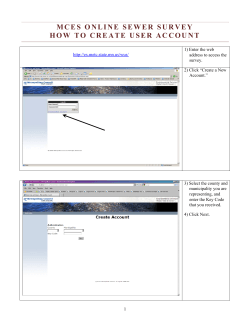
Learn More
Helping Clients Address the Northern Long-Eared Bat Interim 4(d) Rule Incidental take prohibitions apply only within limited geographical areas. On April 2, 2015 the U.S. Fish and Wildlife Service (USFWS) published a final rule listing the Northern Long-Eared bat (NLEB) as a threatened species under the Endangered Species Act (ESA) and established an interim 4(d) Rule that allows for certain activities where an incidental take is permissible. The listing and rule become effective May 4, 2015. How could the Interim 4(d) Rule impact your project? For projects within designated geographic areas, the listing has the potential to impact permitting schedules and operational requirements for wind, transmission, and other projects that involve tree clearing. This listing has been anticipated for some time due to severe population declines resulting from white-nose syndrome (WNS), a disease affecting hibernating bat populations throughout much of eastern North America. Under the interim rule incidental take of NLEB, resulting from an otherwise lawful activity, is not prohibited outside of the WNS Buffer Zone. Within the WNS Buffer Zone, incidental take of NLEB is prohibited except for certain activities such as maintenance of an existing ROW or minor clearing of less than an acre of habitat so long as certain conservation measures are met. The NLEB is known to occur in parts of 37 states and the District of Columbia. According to the USFWS, the WNS Buffer Zone is expected to be updated monthly as more WNS affected hibernacula are discovered. Under the ESA incidental takes of threatened species are generally not permissible unless a Habitat Conservation Plan (HCP) has been prepared and an incidental take permit (ITP) has been obtained. The NLEB listing is unusual in that the incidental take prohibitions only apply within a limited geographical area. For projects within this area the listing has the potential to impact the permitting schedules and operational requirements for wind, transmission and other development projects that involve tree clearing. Wind Projects For wind projects still in development within the WNS affected range, it will be necessary to evaluate the potential for a NLEB presence within the project area as part of the initial site characterization process. When there is a potential presence it is advisable to engage the USFWS and state wildlife agencies to determine whether an ITP/HCP is appropriate for the project. For wind project in operation within the Buffer Zone, project operators should evaluate whether their project has the potential for incidental take of NLEB as the interim 4(d) rule exceptions do not cover such a take. The listing of the NLEB Northern Long-eared Bat captured during mist places an affirmative obligation on the owner/operator of a netting surveys in Ohio. project within the WNS Buffer Zone to make a determination whether there is a potential for a NLEB take to occur, and if there is, decide whether to apply for an ITP and prepare a HCP. Transmission Projects There is an important exception under the interim 4(d) rule for certain Rights of Way (ROW) maintenance activities associated with transmission lines. The interim rule allows for the incidental take of NLEB within the WNS Buffer Zone if it occurs during the maintenance or expansion of an existing ROWs, provided the activity: • Occurs more than 0.25 mile from a known, occupied hibernacula; • Is within 100 feet of the edge of the existing ROW; • Does not cut or destroy known, occupied roost trees during the pup season (June 1–July 31); and • Does not involve clearcutting during the pup season (June 1–July 31). This exception does not apply to the clearing of new ROW’s. For new transmission projects within the WNS Buffer Zone, it will be necessary to evaluate the potential for a NLEB presence in the project area as part of the initial site characterization process and consult with USFWS regarding the need for an ITP/HCP as part of the permitting process. Other Projects For all projects involving tree clearing within the WNS Buffer Zone it will be necessary to evaluate the potential for a NLEB presence in the project area. This will be particularly important for projects requiring federal approvals or are subject to review under the National Environmental Protection Act (NEPA). To learn more about the potential impact of the interim rule, contact an E&E expert: Mike Morgante mmorgante@ene.com (716) 684-8060 Courtney Dohoney cdohoney@ene.com (703) 522-6065 www.ene.com Katie Day kday@ene.com (312) 578-9243
© Copyright 2025











